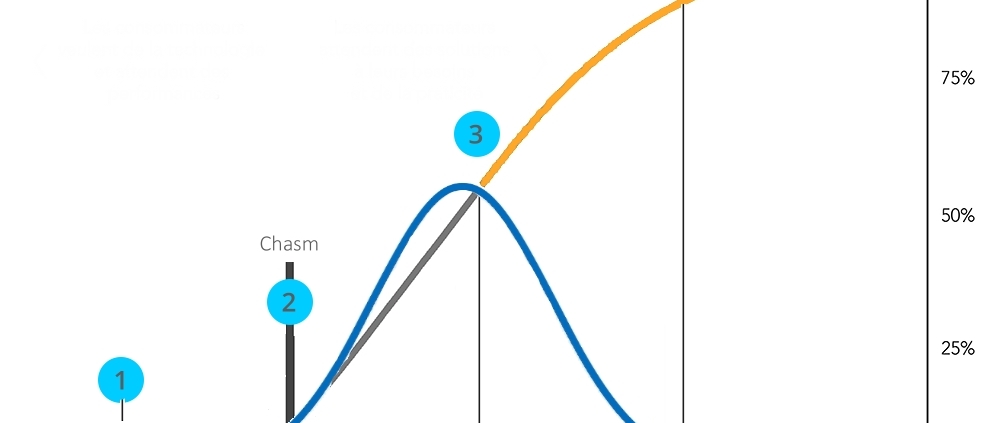Innovation Market Dynamics
Innovation Market Dynamics
Before starting to innovate, it makes sense to understand the general market dynamics for innovative solutions. For decades, enterprises struggled when their innovative solutions did not take off within 12 to 24 months and killed the projects. Little was known about innovation diffusion. Everett Rogers coined the term in 1966 but the actual timeline of an end-to-end innovation was too long to even measure accurately. Today we know that any innovation takes and took 7 to 15 years to become mainstream. Obviously, that was a stretch for any enterprise executive. Yet, telephony, TV, personal computer, Internet, Social Media, 3D-Printing, and electric vehicles took, on average, a decade to become mainstream. A normal consumer however does not see that timeline. In 2012 Facebook was a big talk when it went public with horrendous valuations and no profit. “Already” in 2016, just four years later it became an acceptable mainstream platform. People tend to forget that they started in 2004 and took 12 years to become “mainstream”. And Tesla took much longer.
Hoping to have an ROI in 3 years is virtually impossible – why is that?
It’s not the innovative solution that takes so long to build – it’s the market that takes so long to decide. Agile leaders or agile consumers start to give almost anything interesting a try. It is what keeps them at the forefront of things. The large majority of conservative buyers wait and see and move only when the “New Thing” is tried and tested. Usually, in the early days of a product researchers, analysts and experts see great danger in the new products and delay the market acceptance even further. But when the late majority decides to buy because it seems to be “a good idea” the market opens up to mass markets and volume. It doesn’t matter if it is B2B or B2C. It is the human factor – no matter where they sit.
Leading businesses keep staying on top – time and time again
The people that represent such a leading company are typically early adopters. Just a little more risk-takers. Their experiences with new technology keep them ahead of the competition. When years later the competition catches up, the leaders are perfectly set and experts in the respective technology. And in the next few years, that same game repeats itself.
Why conventional enterprises have a hard time
Of course, they are not stupid, so they could make a leap and catch up with leaders fast. The problem is the composition of people. You cannot jump on every opportunity because who knows what is really successful in the end. Why did the Nokia executives not jump on modern technology? Why did Sun Micro not see the writing on the wall? Why did Nixdorf not adopt in time? Why did Digital Equipment merge with HP and almost both failed? Why did…. the list is long. But the answer is easy: They just did not see it. Far too busy with their own organization instead of having eyes and ears in the market. Trying things that make logical sense instead of waiting until others found it out for them is a terrible price to pay. And that is not only for NOT EXPLORING THEIR OWN SITUATION. IT IS WHY THEY CAN’T INNOVATE and develop a long-term view of what the market needs.
Innovation Market Dynamics Considerations
1) Make yourself familiar with the idea that your innovation will take 5+ years for notable impact in the market.
2) Understand the full scope of an innovation engagement to keep the time to innovation as short as possible. Meaning your innovation team has no time to rest.
3) Have a very robust strategy in place to be able to manage such a long-term engagement with all its changing landscape underway.
4) Never even think of integrating the innovative solution into your conventional sales and marketing operation. The go-to-market approach is far too different.
5) Make sure you have a complete picture of your innovation engagement and the fact that if you need innovation to transform a business unit or an entire business, your innovation will need to produce NEW Billions of Euros to make the transformation successful.
6) Ensure that innovation is led by a Chief Innovation Officer, not by the CEO or any other executive as a side business.




Leave a Reply
Want to join the discussion?Feel free to contribute!